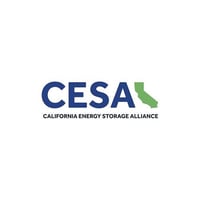The SGIP: where high tech principles meet energy policy
December 6, 2016
Jin Noh, Policy Manager
Here in San Francisco Bay Area, entrepreneurs are taught to continuously improve on their new products, create ‘build-measure-learn’ feedback loops, and change-up or ‘pivot’ a product in fast cycles. Such principles promise success for many tech startups, particularly in the global hub of innovation and entrepreneurship, Silicon Valley.
Although progress and improvement in the public policy world occur on the scale of years rather than months as they do in the tech startup world, the same principles could be applied to the transformation of our electrical grid through programs like California’s Self-Generation Incentive Program (SGIP). This program has gone through its ups and downs, and since its establishment in 2001, has continuously been tinkered and improved to align the program with state energy and environmental goals. Recently, a June 2016 Decision (D.16-06-055) by the California Public Utilities Commission (CPUC) greatly improved the program structure while recognizing the importance of transforming the market for energy storage in meeting state energy and environmental goals by allocating 75% of the program budget to funding advanced energy storage projects.
Many people involved in SGIP understandably have a love-hate relationship with this program, which provides incentives to promote the installation and clean and efficient customer-side energy storage and generation technologies. SGIP has taken hits in the public eye in recent years due to fast ‘runs’ on the funding or concerns about the program funding technologies that emit too much greenhouse gas (GHG) emissions. But each time, California’s regulators and policymakers have used these feedback loops to consistently improve the program over the years. Creating a perfect public program from the onset is tough, but with the help of invested stakeholders such as CESA and its members, the program is now new and improved and poised to fund the next generation of technologies needed to help achieve California’s 50% renewable generation by 2030 goal and GHG emissions of 40% below 1990 levels by 2030 goal.
SGIP was established in 2001 by Assembly Bill 970 following the 2001 California electricity crisis as a program intended to fund distributed generation technologies that reduce peak loads – hence the name of the program being the “Self-Generation Incentive Program.” Due to the success of the program, SGIP funding has been extended three times, with advanced energy storage systems becoming eligible for SGIP incentives in 2008. Starting in 2011, the goals of the program shifted from one of peak load reduction to one of GHG reductions, grid support, and market transformation. In 2015, the CPUC tightened GHG standards to address the aforementioned concerns.
The program iterated once again in 2016 with fundamental changes in incentive levels and program structure. Administration of SGIP is now more streamlined and responsive to market demand, as well as more equitable in funding different types of energy storage technologies and companies. Rather than annual openings to apply for and claim SGIP incentives, which created a disruptive start-stop nature to the energy storage market, the program will now be administered on a continuous basis across five “budget steps” and ratchet down incentive rates depending on the level and rate of incentive claims in any given budget step, a proxy for market demand and technology maturity. To ensure that a diverse range of energy storage technologies and companies are funded through this program, a new developer’s cap will go into effect in 2017 that limits any developer from claiming more than 20% of the funds in any given budget step.
Importantly, certain key changes to SGIP point to the importance of transforming the market for energy storage. The program now allocates 75% of the SGIP budget for advanced energy storage systems, with 15% of this budget reserved for residential (less than 10 kW) projects. While the residential market for energy storage is still nascent, SGIP will be instrumental in transforming projects in this market to better prepare for the transition to default time-of-use rates scheduled to be implemented for residential customers in 2019. Furthermore, instead of setting per-Watt incentive rates, the program now has a per-Watt-hour incentive rate that declines with each additional hour of energy storage duration, thereby supporting the funding of short-duration and long-duration energy storage. The funding of longer-duration storage will be particularly needed in shifting energy from midday overgeneration hours to peak evening hours (see the “duck curve”).
Although there are a number of other changes (not highlighted above) that also represent major improvements to the program, there are still potential improvements to be made. Important issues still to be addressed include project measurement and verification and the interaction of SGIP-funded projects with electricity rate structures. Further changes and improvements to the program, which may not be evident now, will inevitably be needed to ensure that these projects supported by a ratepayer-funded program align with and operate according to the overarching goals of the program.
But in the public policy world, we all know that it is difficult to get it perfectly right the first time, or the second, or sometimes even the third time. The continued improvements to SGIP, however, point to the intelligent collective effort of public stakeholders in California to take lessons from the real-world implementation and effects of the program to improve the SGIP in its next incarnation. In that sense, SGIP has lived on as a testament to the Silicon Valley ethos of constantly iterating and learning when to pivot, in this case, to the benefit of California’s ratepayers and the environment.


